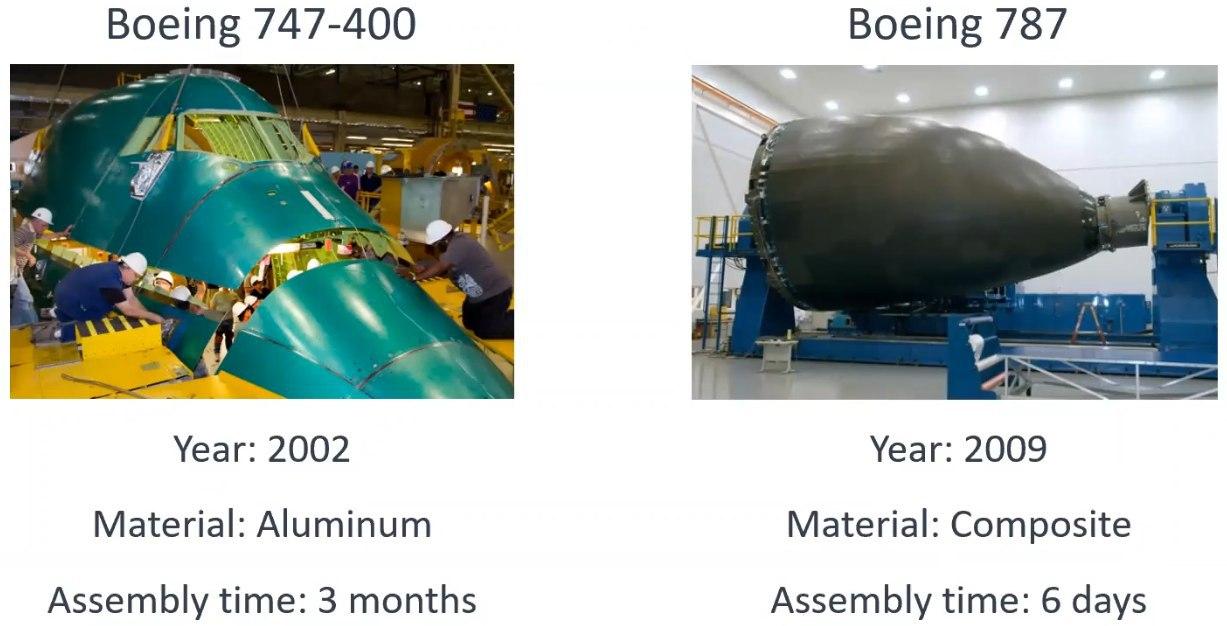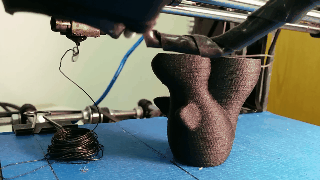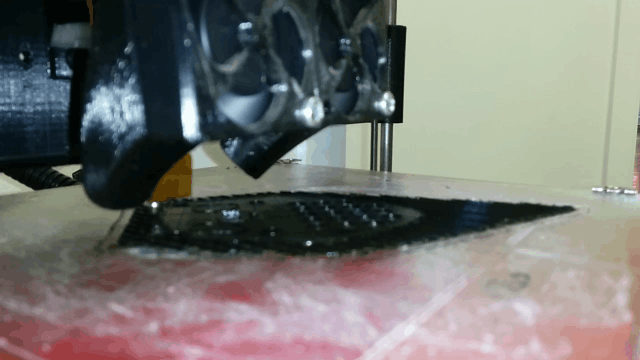The experimental study of consolidation
| Summary | |
|---|---|
| Date | 2020-2025 |
| Tags | in-situ consolidation, composites, 3d-printing, thermoplastics, welding |
| Partners | Prof. Martine Dubé |
| Recruiting | Ethan Cabon, Andre Correa |
The adoption of high preformance composite materials
During the last decades, Carbon Fiber Reinforced Composites (CFRC) have steadily been adopted within the aerospace industry, with the latest generation of civilian aircrafts are made of about 50% of CFRC. These materials provide significant advantages to the performance of an aircraft (fuel consumption, lightweightness, …), thanks to their specific properties, while also significantly improving the manufacturing process of such aircrafts. These materials make the manufacturing of large parts easier and faster, while also reducing the risk associated with such parts by reduce the total amounts of necessary assemblies to make the part. An assembly, meaning the permanent or temporary joining between two different parts, is always a source of risk and will require extensive testing to ensure that a welding line or a fastened connection will not be at the source of a crack or other weakness of the final part. The advantages of such materials are illustrated with the following figure that shows the benefit of CFRCs for the cockpit of the Boeing 787.

The cockpit of the Boeing 747 was made out of aluminum and required more than 3 months to assemble with hundreds of parts and asseblies required. The Boeing 787’s cockpit was made out of one piece of CFRC that only takes a week to assemble and complete. Image taken from 1
Currently, CFRCs are mostly employed in the aerospace industry because of their prohibitive cost and long cycle times. Although other industries, such as the automotive or sport industrises, are interested in the mechanical properties of CFRCs and that the cost of these materials has been steadily dereasing recently, the main obstacle for future adoption will still be the long cycle times required to cure CFRCs. Indeed, curing thermoset matrices, which are almost exclusively the type of polymers used in CFRCs, usually requires several hours. These very long cycle times are not compatible with the cycle times required in the automotive industry (a few minutes per part at most). Thermoplastic matrices are seen as a possible solution for this problem as they can be formed in much shorter times: instead of curing, which is what thermosets do, they can melt when heated up and solidify again very quickly.
3D printing
FDM 3D-printing leverages the quick melting properties of thermoplastics to form parts. Although the whole process of printing a part using thermoplastics is slow, the time during which the thermoplastic is melted and solidifies is actually wuite short. The solid filament melts inside the nozzle, close to the heating cartridge and it is then extruded through the nozzle, afer what it quickly cools down and solidifies to form the next layer of the part being printed. The following figures illustrate the behavior of thermoplastics during FDM 3D-printing.


Left: A short carbon fibers / PLA filament being extruded. The filament cools down and solidifies shortly after existing the nozzle. Right: A layer of PLA thermoplastic being deposited to form a part.
Although we are able to use and form thermoplastics for 3D-printing, manufacturing Carbon Fiber Reinforced Thermoplastics is still challenging due to the high viscocity and higher temperatures required to process thermoplastics and a lack of understanding of what is actually happening at the microscopic scale during the manufacturing of thermoplastic composites. In order for composite materials to have a wider spread adoption in industries other than the aerospace industry, a better understanding of such phenomena is necessary.
We are currently recruiting a PhD student to work with Pr. Martine Dubé and I on this subject and provide a better understanding of the processes behind the manufacturing of thermoplastic composites.
Leave a comment